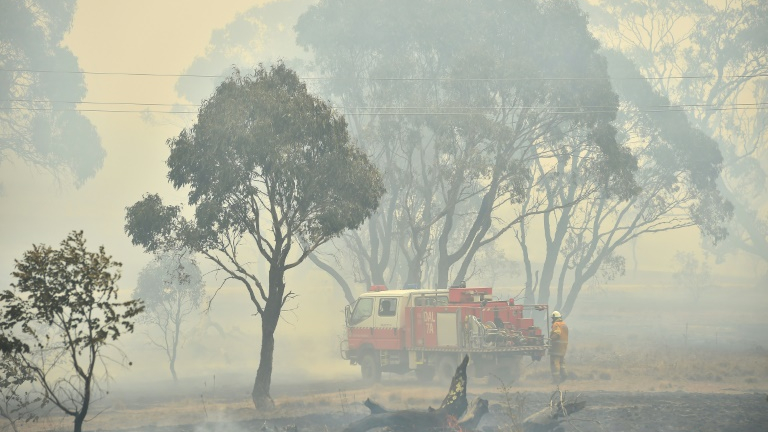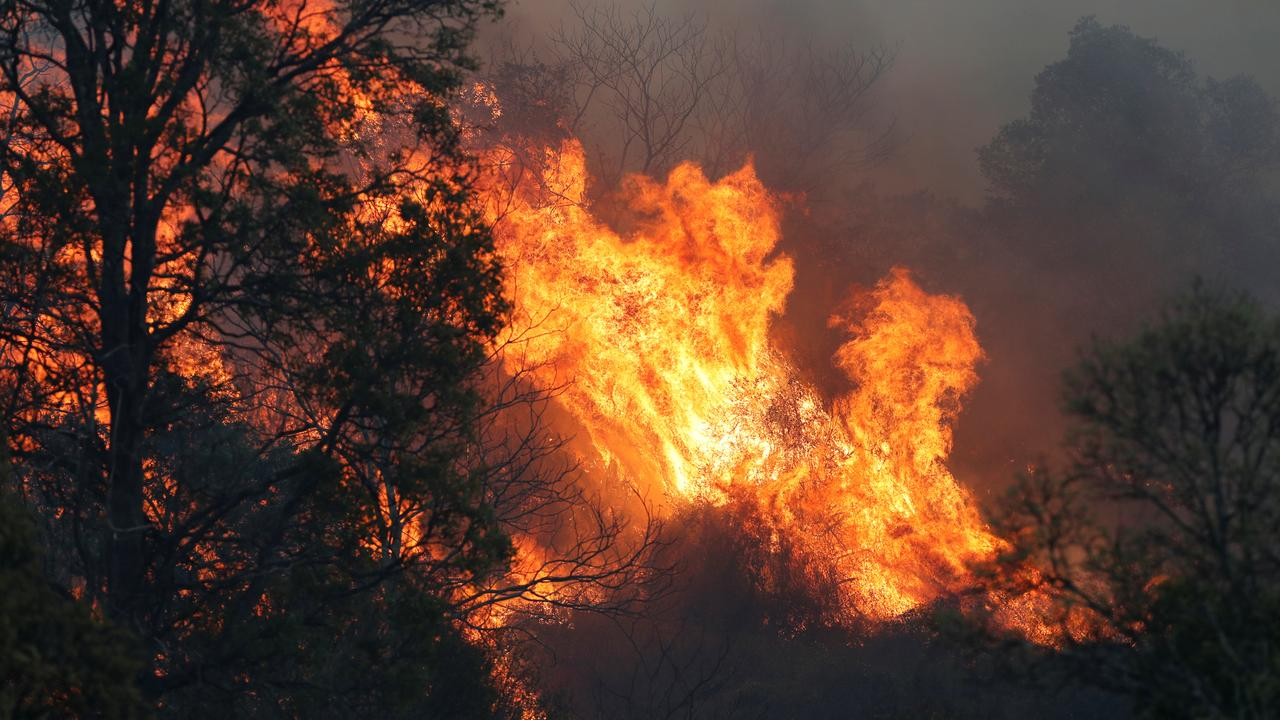
Beleaguered volunteer firefighters who have fought the blazes day-in-day-out say they are "over the moon" at the rain. /AFP Photo
Beleaguered volunteer firefighters who have fought the blazes day-in-day-out say they are "over the moon" at the rain. /AFP Photo
Heavy rain raised hopes on Friday for an end to Australia's unprecedented bushfire crisis, as downpours doused blazes that have burned out of control for months.
The rains in New South Wales (NSW), which began earlier in the week in some areas and are forecast to extend into next week, are expected to drench a number of the remaining fires and help contain others.
The devastating fires, fueled by prolonged drought and record-high temperatures, have raged since September, burning more than 10 million hectares (25 million acres) and killing 33 people.
An estimated billion animals have perished in the fires that destroyed more than 2,500 homes.
"It's breaking the back of this bushfire season, there's no doubt about it," said Shane Fitzsimmons, the head of rural firefighters in NSW, the state worst hit by the crisis.
By Friday afternoon there were no bushfires burning in NSW at the most dangerous emergency or "watch and act" levels – a situation virtually unseen in almost half a year.

A bushfire rages near the rural town of Canungra in the Scenic Rim region of South East Queensland, Australia, September 6, 2019. /Reuters Photo
A bushfire rages near the rural town of Canungra in the Scenic Rim region of South East Queensland, Australia, September 6, 2019. /Reuters Photo
Bushfires are an annual problem during the southern summer, but flared far more widely and earlier than usual following months of severe drought and high temperatures linked to climate change.
Australia's central bank governor on Friday said the fires would likely trim 0.2 percentage points off GDP growth in the December and March quarters.
"The fires have had a devastating personal and economic impact on the areas affected, and the whole country has been affected by these fires," Philip Lowe told lawmakers.
He added that "there has been extensive damage to farms, businesses and public infrastructure," but said spending on rebuilding would likely cancel out the economic impact over the course of the year.
As the bushfire crisis abates, authorities are now bracing for possible flooding. The Bureau of Meteorology issued a string of flood warnings and said some parts of NSW will see their highest rainfall totals in four years.

Photo taken from a helicopter shows a view of the flood-hit area on South Island, New Zealand, February 4, 2020. /Xinhua Photo
Photo taken from a helicopter shows a view of the flood-hit area on South Island, New Zealand, February 4, 2020. /Xinhua Photo
While Australia is bracing for possible flooding, New Zealand has already seen the damages done by severe flooding. Rivers are overflowing and power supply has been cut to thousands of residents in the Southland region, as civil defense declared a state of emergency on Tuesday in the area and asked people in low-lying areas to evacuate immediately.
Minister of Civil Defense Peeni Henare said on Friday that this week's flooding has caused significant disruption to communities in the lower South Island. The New Zealand government will contribute 100,000 NZ dollars (64,193 U.S. dollars) to the Southland regional Mayoral Relief Fund, to support communities impacted by the recent flooding in Southland.
(With input from agencies)